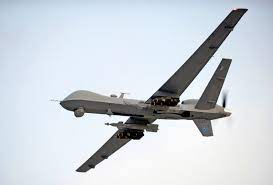
Unveiling the Transformative Power of Drones: Shaping Tomorrow’s Skies
The Rise of Drones: Revolutionizing the Skies
Drones, once considered a novelty, have now become an integral part of various industries and everyday life. These unmanned aerial vehicles (UAVs) have soared in popularity due to their versatility, accessibility, and numerous applications.
Applications of Drones
From aerial photography and videography to agriculture, construction, and search-and-rescue operations, drones have proven their worth across diverse sectors. In agriculture, drones equipped with sensors can monitor crop health and optimize irrigation practices. In construction, they aid in surveying land and monitoring project progress efficiently.
Technological Advancements
The technology behind drones has rapidly advanced, enabling longer flight times, improved stability, and enhanced camera capabilities. High-resolution cameras mounted on drones capture stunning aerial shots for filmmakers and photographers. Moreover, advancements in battery technology have extended flight durations, allowing for more extensive operations.
Regulatory Challenges
As drones become more prevalent, regulatory bodies face challenges in ensuring safe and responsible drone usage. Regulations concerning flight restrictions, privacy concerns, and licensing requirements aim to address potential risks associated with drone operations while promoting innovation in a controlled environment.
The Future of Drones
The future of drones holds exciting possibilities as researchers explore new applications such as drone delivery services, urban air mobility solutions, and environmental monitoring initiatives. With ongoing technological advancements and regulatory frameworks evolving to accommodate drone integration into airspace systems seamlessly,
“The Mechanics of Flight: An Introduction to Drone Operation”
“Exploring the Skies: A Overview of Drone Varieties”
4. “Navigating
- What are the regulations for flying drones in the UK?
- How do drones work?
- What are the different types of drones available?
- Are there any restrictions on where I can fly my drone?
- Do I need a licence to fly a drone in the UK?
What are the regulations for flying drones in the UK?
When it comes to flying drones in the UK, understanding and adhering to the regulations is crucial. The Civil Aviation Authority (CAA) has set out guidelines to ensure safe and responsible drone operations. These regulations include requirements such as registering your drone, obtaining the necessary permissions for commercial use, maintaining line of sight during flights, and adhering to specific height and distance restrictions from people, buildings, and airports. By following these regulations, drone operators can enjoy their hobby or utilise drones for various purposes while prioritising safety and compliance with the law.
How do drones work?
Drones operate through a combination of sophisticated technology and precise engineering. These unmanned aerial vehicles are equipped with rotors or propellers that generate lift, allowing them to take off and manoeuvre in the air. Controlled by a remote pilot or autonomous systems, drones use sensors, GPS navigation, and stabilisation mechanisms to maintain balance and stability during flight. Additionally, onboard cameras and other sensors capture data that can be transmitted in real-time or stored for analysis. Overall, drones work by harnessing cutting-edge technology to perform a wide range of tasks efficiently and effectively.
What are the different types of drones available?
When exploring the realm of drones, one frequently asked question is, “What are the different types of drones available?” Drones come in various shapes and sizes, each designed for specific purposes. Consumer drones, often equipped with cameras for photography and videography enthusiasts, offer a user-friendly flying experience. Racing drones are built for speed and agility, catering to drone racing enthusiasts. Professional drones feature advanced camera systems and longer flight times, ideal for filmmakers, surveyors, and other commercial applications. Lastly, military drones serve strategic purposes such as reconnaissance and surveillance missions. Understanding the diverse types of drones available allows enthusiasts and professionals to choose the right drone to suit their needs.
Are there any restrictions on where I can fly my drone?
When it comes to flying drones, there are indeed restrictions on where you can operate them. In the UK, drone operators must adhere to regulations set by the Civil Aviation Authority (CAA) to ensure safety and privacy. These regulations include restrictions on flying drones near airports, crowded areas, and sensitive locations such as prisons and military installations. It is essential for drone enthusiasts to familiarise themselves with these guidelines to fly their drones responsibly and legally while enjoying this exciting hobby.
Do I need a licence to fly a drone in the UK?
In the UK, the regulations regarding flying drones stipulate that you may need a licence or permission depending on the weight and purpose of your drone. The Civil Aviation Authority (CAA) governs drone flight in the UK and provides guidelines to ensure safety and compliance with airspace regulations. For recreational drone flying, individuals typically do not require a licence but must adhere to specific rules, such as flying within visual line of sight and away from airports and populated areas. However, for commercial drone operations or certain types of activities, obtaining a permission or licence from the CAA is necessary. It is crucial to familiarise yourself with the latest regulations to fly your drone responsibly and legally in the UK.